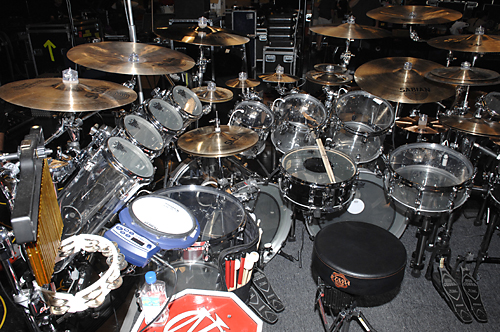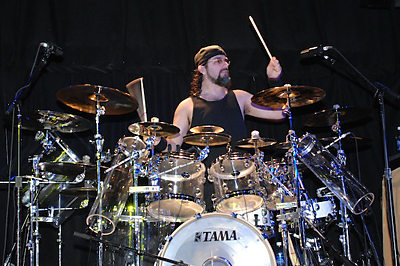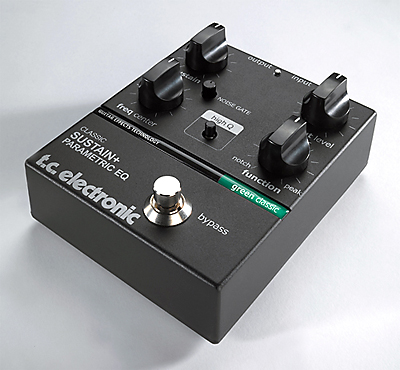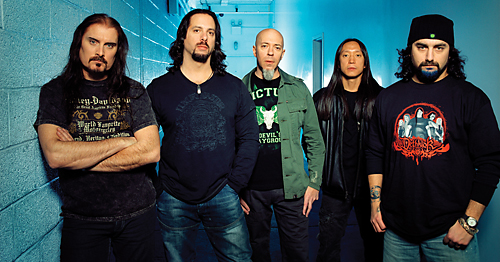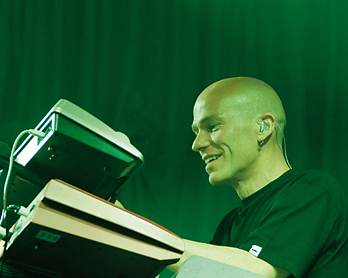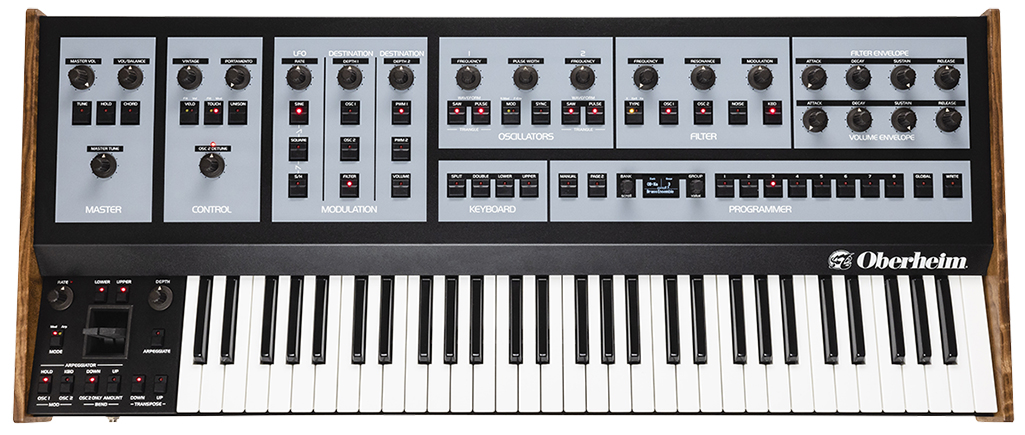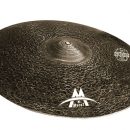Do we really need to write an introduction to one of the most popular, talented, and prolific rock drummers of the modern era? The drummer we’re talking about, Dream Theater’s Mike Portnoy, is the current generation’s poster child for progressive rock drumming. His monster chops, blazing fills, and double-bass riffs will make your head spin if you’re not already listening to his work.
Portnoy is a clinician, instructor, author, and videographer. He even has his own signature series lines of cymbals and drums. When he’s not working with Dream Theater, he’s recording and performing with supergroups Liquid Tension Experiment, Transatlantic, O.S.I. (Office of Strategic Influence), and touring in support of bandmate John Petrucci on Joe Satriani’s G3 tour – and that doesn’t even include his tribute bands to The Beatles, Led Zeppelin, The Who, and Rush!
He was voted Best Progressive Rock drummer for twelve years straight – a record, by the way, in the Modern Drummer Readers Poll, and in 2004 was the youngest person ever to be inducted into the Modern Drummer Hall of Fame. As you can imagine, we were thrilled with the opportunity to “seize the day” (Mike’s personal mantra), or at least a half hour, to talk with this progressive rock icon. So, without further ado, the one… the only… Mike Portnoy.
It’s not about solos, or technique, or chops. It’s about what I think in the context of the music I’m a part of, and that is what’s important to me.
MPc: Let’s start by talking about the latest Dream Theater studio recording, Systematic Chaos. In general, what are your thoughts about the new album?
Mike: We’re excited about it. It feels like a new beginning for us for many reasons. The Score DVD and concert really just felt like the end of the first twenty years, and this kind of feels like the beginning of the next twenty years. We have a fresh new team on board with a new record company, and the beginning of this record came after taking a nice break after the Score concert.
MPc: Your drum sets have grown over the years and taken on names such as the “Purple Monster,” “Siamese Monster,” and of course the “Albino Monster” used on the Octavarium tour. Which drum set did you use for recording Systematic Chaos?
Mike: I used the Albino Monster, which was the kit used on the whole Octavarium tour. It was the big double white kit, [Tama] Starclassic Maple drums. Actually, I retired it right after we did the sessions and built a new kit for the upcoming tour.
MPs: What can you tell us about the new kit?
Mike: It follows the whole concept that I’ve created with my last two kits, which is basically two kits side-by-side. The configuration is similar to what I’ve had with the Albino Monster, but these are Tama Starclassic Mirage drums, which are acrylic shells, so it’s a big, giant, transparent drum set.
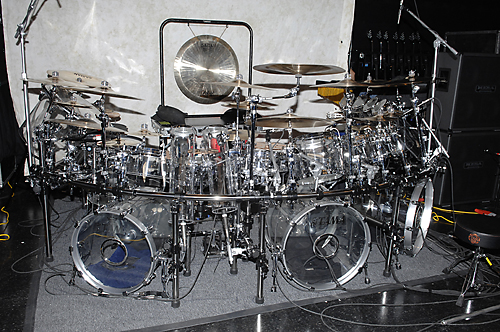
MPc: Sounds awesome!
Mike: Yeah, it’s going to be very, very cool. I’m enjoying it.
MPc: It seems like acrylic drums have made a resurgence in popularity. What made you choose acrylic shells for your new kit?
Mike: Well actually, I could be wrong – and not to pat myself on the back, but I think Tama’s getting back into acrylic drums may have stemmed from a kit that they built for me back in 2003. I did a Led Zeppelin tribute and they built me a John Bonham replica kit. It was a replica of the classic amber Vistalite kit he used on The Song Remains the Same. That’s the first time in many, many years that Tama made acrylic shells. I enjoyed playing it so much for the Zeppelin tribute that I ended up using that kit in the studio to record [many of the tracks on] Octavarium. I’d like to think that building that kit spawned their interest in getting back into it, and since then, Tama has introduced the Mirage Series.
You know, I think – obviously – they look really cool, so that was the coolest thing about them. But I really think they sound awesome, and I know a lot of drum purists swear by wood shells and wouldn’t play acrylic drums, but I think they actually sound really amazing. They’re big, but they have a lot of attack at the same time.
MPc: When you were recording Systematic Chaos, did you record any drum cam footage?
Mike: Yes, we always have a camera rolling in the studio. I have a drum cam DVD that will be coming out probably the same week as the album.
MPc: Systematic Chaos will be released in a Special Edition CD plus DVD format.
Mike: I was on tour doing the G3 tour, so unfortunately, we were not able to be present during the 5.1 mix, but we left it in the capable hands of Paul Northfield, who recorded, engineered, and mixed the album with us. So, from his experience spending five months with us, and me and John mixing the album with him, we pretty much trusted him with the 5.1 mix.
MPc: Tell us about the ninety-minute documentary for the Special Edition. How chaotic was the recording process?
Mike: Not chaotic at all; very systematic, actually. When we make a record, we’re very responsible, professional people, myself in particular. I’m a very organized person. Our creative process is very organized and methodical because of my organization. So, as one of the writers, musicians, and co-producer of the album, that kind of reflects. Day by day I’ll come in and usually lay out the game plan for everybody regarding what we should do. It’s very directed and focused.
MPc: We also heard that you will be shooting a video for one of the tracks of the album. What inspired the band to shoot a video?
Mike: Well, we haven’t done a video in about ten years now. The last time we did a video was back in 1997 for “Hollow Years” off of Falling Into Infinity. And even to make that video we had to have our arms twisted because we didn’t ever think that we were a video type of band. We’re not in the business of making videos and singles – we’re in the business of making albums. So we felt like making music videos back then was a waste of time and money just because MTV was not going to play Dream Theater. So, we stopped making them.
Through the years since then, in the past ten years, obviously the Internet has become an incredibly valuable source for [marketing] bands that it seemed like the right time to get back into it. Making a video these days isn’t really for MTV. In fact, MTV probably doesn’t even show videos – it’s all reality TV. So really, these days video can be utilized on websites and iTunes and YouTube, so it made sense to get back into it. So, we shot our first video in ten years and probably will do several more for this album as well.
MPc: Let’s talk about your new instructional DVD, In Constant Motion. You cover a lot of material!
Mike: Yeah, seven hours and three disks. The Titanic of drum instructional videos. In Constant Motion, the DVD, really sums up everything I’ve done over that last seven years, and that’s been an incredible amount of work within Dream Theater and outside of Dream Theater. At least a dozen different side projects and bands and stuff that I’ve been a part of.
We’re not writing technical music to impress people.
We’re doing it because it’s what we enjoy.
MPc: How did you approach the drumming for your tribute bands?
Mike: Well, in each one of those cases I was paying tribute to absolute heroes of mine. In fact, those four drummers: Ringo, John Bonham, Keith Moon, and Neil Peart, were probably my four biggest influences of all time. For me it was so much fun to just getting into their skin for a couple of shows.
It started with the kits themselves. In all four of those cases, Tama built me replica kits for all four of those drummers, and that was a great starting point for me to really get into each one of those drummers’ heads in terms of their gear. From there, playing their music helped me get into each one of their styles and really analyze the differences between them. All four of them are very different drummers.
Ringo was all about playing for the song, and his drumming was very simplistic. Bonham was all about the big fucking monster fat groove. Keith Moon was all about freak, recklessness style and just all over the place, and Neil Peart was a very methodical, technical style. So, you know, four very different styles, and in all cases I tackled them with the utmost respect for the original style. I think I was able to transform in each one of those cases.
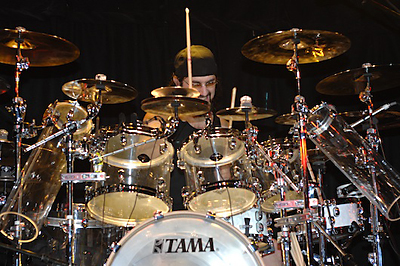 MPc: The replica drum sets are beautiful. Tell us about the creation of those drum sets.
MPc: The replica drum sets are beautiful. Tell us about the creation of those drum sets.
Mike: Basically, I would work with the people at Tama and Sabian and talk with them and figure out which era of drum sets I liked the best. In the case of Neil Peart it was his candy-apple red Tama kit from the Signals era because that was the kit he was playing at the time I was really obsessed with him, in the early Eighties. That was the kit we wanted to reproduce with him. With Bonham it was the classic Song Remains the Same kit. Keith Moon – it was the kit he was using between 1969 and 1972 during the whole Tommy, Live at Leeds, and Woodstock era because (to me) that was his classic period. I would pick an era from each one of those drummers and work with Tama and Sabian to get the kit as close as possible.
MPc: Let’s talk about your relationship with Tama and Sabian. MusicPlayers.com reviewed your Tama snares and really liked them. How did you approach Tama with the idea to produce a signature drum, and do you have any plans to create any more signature models?
Mike: The origin of the Tama Melody Master was that originally, I had this idea of a foot operated snare strainer, and when I was doing Falling Into Infinity they built me one, and I used it on that album and tour. Basically it was the idea of locking the snare into three positions instead of two, which is Off, Loose snare, and Tight snare. It was operated with a foot pedal, like a timpani. That was the original idea, but we found that it was way too expensive to mass produce something like that, so we ended up going with a manual throw-off, and that’s what the Melody Master became.
It still incorporates that three-way throw-off. The first round were two different ones: a 14” wood shell and a 12” steel shell. They were black. Last year, they did a limited edition one of the albino versions in white. As far as future plans, I don’t know. With my Mirage Monster I am still using the black Melody Masters, so there are no plans to do an acrylic Melody Master at this point, but we’ll see what happens in the future.
MPc: You also have a signature series of Sabian cymbals with your signature splashes and Max Stax sets. What are the characteristics of these cymbals, and when did you start stacking them for that unique effect?
Mike: I started stacking them about twelve years or so ago when one of the guys at Sabian suggested it. He was calling it a firecracker. This was before Terry Bozio was on board with Sabian, so his stacks didn’t exist at that point. I started stacking a bunch of existing Sabian cymbals, then when the time came that they wanted to develop some signature cymbals with me, that was one of the natural routes to pursue. We had the idea of the Max Stax and basically came up with three sets of them: a high stax, which were 8”, a mid stax, which were 10”, and a low stax, which were a 12” and a 14”. The purpose of those is they are very quick and trashy. You can play rhythms and patterns on them, so they’re kind of a cross between a drum and a cymbal, really.
Then there are the splashes. I have three Max Splashes, which are 7”, 9”, and 11”, which are obviously odd sizes compared with the usual 8”, 10”, and 12”. I thought that would make them unique, and they are incredibly glassy and quick, but very durable at the same time.
MPc: Dream Theater has been regarded as musicians’ musicians. Is there a challenge in keeping the music technical, yet still making accessible rock songs?
Mike: No, we’re not writing technical music to impress people. We’re doing it because it’s what we enjoy. It challenges us. You know, we can get bored very easily, so we want to write music that keeps us on our toes and keeps us interested. We never started writing music like this to show off. We did it because we really enjoyed challenging ourselves and being the best musicians we could be. We were formed at a music college, and we were all at Berklee because we wanted to be the best that we could be, and it just ended up translating into the music we wrote within the band that we formed.
MPc: As technical as the songs are on the new album, we feel they are very accessible.
Mike: As much as we can write some crazy out-there stuff, we also really always keep the priority on the song and the melody, and something that’s going to be emotionally moving as well. We get criticized all the time, or blasted, for being over-technical or over-the-top, but really, our music is incredibly accessible. I think if you look at bands like Tool and Mars Volta, I think they’re writing music that’s completely out there and hard to grasp, but yet somehow they are embraced by the mainstream. I think if you put on the latest Mars Volta album and you put on our latest album, I think our music is ten times more accessible, but for some reason, we get criticized as being the self-indulgent ones.
MPc: We could not agree with you more. Listening to Systematic Chaos, we felt like there was a huge dynamic range and variation in style, with a balanced blend of the melodic and heavy sides of Dream Theater.
Mike: Thank you.
MPc: There’s no question that you are one of the most influential rock drummers of this generation. You’ve received too many awards to list for all your contributions, not to mention being the youngest person voted into the Modern Drummer Hall of Fame. How does it make you feel to receive all this recognition?
Mike: It’s incredibly flattering on one level. It’s made all of my personal dreams come true. I remember just getting my first story in Modern Drummer. I felt like I could quit at that point, and that was just the start. Since then I’ve got my third cover story coming up and I’m in the Hall of Fame and blah, blah, blah, whatever, (laughs) it’s just exceeded far beyond my wildest dreams. On a personal level, it’s a great achievement and incredibly flattering, but on another level, it’s really scary and intimidating because I almost feel like there’s (now) these expectations constantly hanging over my head.
Like I’ve said, I was never trying to show off or trying to impress people. I was just doing what naturally came to myself, and now all the accolades create this expectation that precedes me. It’s a little intimidating when I go out and do drum festivals and there are these other amazing drummers, and I feel like they look at me like, “Oh, Okay, impress me,” and I’m not like that. I’m more about just trying to make music, just trying to be part of the bands that I play with, and my latest instructional DVD is all about that. It’s not about solos, or technique, or chops. It’s about what I think in the context of the music I’m a part of, and that is what’s important to me.
